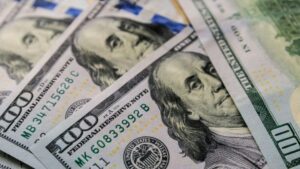
The U.S. dollar is stable against the euro and the pound on Monday morning and is weakly falling against the Japanese yen in anticipation of this year’s first meetings of the Federal Reserve, the European Central Bank and the Bank of England.
The ICE-calculated index showing the U.S. dollar’s performance against six currencies (euro, Swiss franc, yen, Canadian dollar, pound sterling and Swedish krona) is down less than 0.1% in morning trading.
The euro/dollar pair is trading at $1.0866 as of 7:47 a.m., versus $1.0869 at the close of last Friday’s session.
The dollar/yen exchange rate is down 0.1% at 129.70 yen, down from 129.85 yen at the close of trading on Friday.
The pound is trading at $1.2394 versus $1.2396 at the close of last session.
The Fed will release the results of its meeting on Wednesday, February 1. Analysts expect the Fed leadership to raise the key interest rate by 25 basis points, meaning the hike will be more moderate than at previous meetings.
Market participants will also closely follow the speech of Fed Chairman Jerome Powell, hoping to get new signals on the future trajectory of monetary policy.
Last week, it became known that growth in the Core Consumer Price Index (Core PCE), which the Federal Reserve closely monitors when assessing inflation risks, slowed to 4.4% in December from 4.7% in November, marking a fourteen-month low.
The outcome of the ECB and Bank of England meetings will be known on Thursday. Experts expect both central banks to raise interest rates by 50 bps.
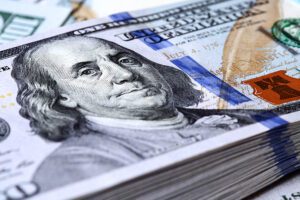
The U.S. dollar is getting stronger against the euro and the pound sterling in trading on Friday, getting cheaper against the yen.
The ICE-calculated index showing the dollar’s performance against six currencies (euro, Swiss franc, yen, Canadian dollar, pound sterling and Swedish krona) gained 0.11%, while the broader WSJ Dollar Index gained 0.07%.
The euro/dollar pair was trading at $1.0871 as of 8:20 a.m., up from $1.0892 at the close of the previous session.
The pound was down to $1.2380 from $1.2410 the day before.
Statistical data published on Thursday showed that the U.S. economy remains resilient despite a significant tightening of monetary policy by the Federal Reserve (Fed).
According to preliminary data from the U.S. Commerce Department, the nation’s GDP rose 2.9% on an annualized basis in the fourth quarter after climbing 3.2% in the previous quarter. The consensus analyst forecast cited by Trading Economics suggested economic growth weakened to 2.6%.
“The Commerce Department report suggests that the U.S. economy remains relatively strong despite aggressive measures by the Federal Reserve trying to slow inflation,” notes BMO Family Office chief investment officer Carol Schleif, quoted by Market Watch.
A less-than-expected slowdown in U.S. GDP growth last quarter somewhat dampened investor optimism that signals of deterioration in the U.S. economy would prompt the Federal Reserve (Fed) to further slow the pace of base interest rate increases.
The first Federal Open Market Committee (FOMC) meeting of the year will be held next week. The U.S. Central Bank raised the rate by 50 basis points (bps) in December after increasing it by 75 bps at the end of the previous four meetings.
On Friday, the market will follow the Commerce Department’s report on Americans’ income and spending for December, which includes data on consumer price movements.
According to a consensus forecast by experts quoted by Trading Economics, the PCE Core Consumer Price Index, which excludes food and energy costs, rose 0.3% in December after rising 0.2% a month earlier.
The dollar/yen dropped to 129.91 yen against 130.22 yen in previous trading.
The International Monetary Fund (IMF) recommended the Bank of Japan to consider taking measures to increase the flexibility of long-term government bond yields, noting that rising inflation risks in the country require additional room for maneuver in monetary policy.
In particular, the Japanese Central Bank could increase the target yield on 10-year government bonds, expand the range of fluctuations in the interest rates of these securities, as well as return to the quantitative target in the bond buyback program and switch to the purchase of more “short” securities, says the IMF report, published Thursday.
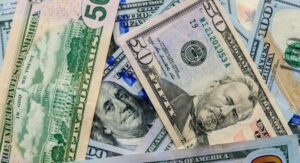
The U.S. dollar is stable against the euro in trading on Wednesday, strengthening against the pound and the yen.
The ICE-calculated index showing the dollar’s dynamics against six currencies (euro, Swiss franc, yen, Canadian dollar, pound sterling and Swedish krona) is adding 0.02% in trading, while the broader WSJ Dollar Index is losing 0.04%.
The euro/dollar pair is trading at $1.0899 as of 8:00 a.m., up from $1.0888 at market close Tuesday.
The pound is down to $1.2319 from $1.2329 the day before. The dollar fell to 130.44 yen against 130.17 yen in previous trading.
This week traders will focus on preliminary data on US GDP for the fourth quarter to be published by the US Department of Commerce on January 26. The consensus-forecast of experts quoted by Trading Economics suggests that the American economy growth slowed down to 2.6% in October-December from 3.2% in the third quarter.
The data published the day before showed a continuing weakening of business activity in the states.
The composite Purchasing Managers Index (PMI) in the U.S., calculated by S&P Global, rose to 46.6 points in January from 45 points a month earlier. A reading below the 50-point mark indicates a contraction in business activity. The U.S. PMI has remained below that level for seven months in a row.
Business activity in January continued to fall in both the U.S. manufacturing and service sectors, preliminary data from S&P Global showed.
Experts expect the weakening economic recovery to prompt the Federal Reserve (Fed) to slow the pace of base interest rate hikes.
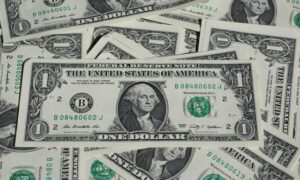
The dollar is getting cheaper against the euro and the pound sterling and is getting stronger against the yen.
Signals of a weakening U.S. economy and recent comments from Federal Reserve (Fed) leaders give investors hope that the U.S. Central Bank will continue to slow the pace of raising the benchmark interest rate.
Federal Reserve Board of Governors member Christopher Waller said last Friday that the central bank has already raised the rate substantially – and “it’s time to slow down, but not stop” its hike.
“I am in favor of a 25 basis point (bps) rate hike at this point in the Fed’s upcoming meeting,” Waller said during a speech at the U.S. Council on Foreign Relations.
“We still have a long way to go to get inflation back to the 2% target, and I believe I will support further tightening of monetary policy,” Waller was quoted by Market Watch.
Federal Reserve Bank of Kansas City (FRB) President Esther George told Bloomberg TV that while inflation has slowed, it is still well above the target.
“To stay true to our price stability mandate, we need to be a little more patient,” she said.
In December, the Fed increased the rate by 50 bps. – To 4,25-4,5% per annum after its rise by 75 bp at the end of the previous four meetings, and the market is waiting for a further slowdown in policy tightening, taking into account signals of weakening inflation and economic activity in the U.S.
The European Central Bank (ECB) may have to continue raising the rate at a rate of 50 bp in both February and March, ECB Governing Council member and Dutch central bank governor Klaas Knott told the Dutch broadcaster WNL. According to Knott, the rate hike will continue in the coming months.
In a separate interview he gave to the Italian newspaper La Stampa, Knott said that it was “too early” to talk about the possibility of a slowdown in the ECB’s rate increases by the summer.
The ECB raised key interest rates by a total of 250 bps last year. Experts polled by Bloomberg expect the ECB’s deposit rate, currently at 2 percent, to eventually rise to 3.25 percent.
The ICE-calculated index showing the dollar’s dynamics against six currencies (euro, Swiss franc, yen, Canadian dollar, pound sterling and Swedish krona) lost 0.22% in trading Monday, while the broader WSJ Dollar Index lost 0.09%.
The euro/dollar pair is trading at $1.0893 as of 8:15 a.m., up from $1.0857 at market close on Friday.
The pound/dollar exchange rate rose to $1.2415 from $1.2394 the day before.
The dollar’s value against the yen is 129.92 yen against 129.5 yen in the previous session.
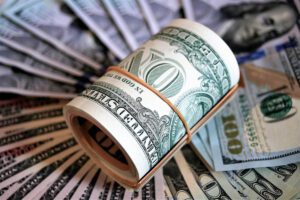
The U.S. dollar is stable against the euro and getting stronger against the yen and the pound sterling during trading on Friday.
The ICE-calculated index showing the dollar’s dynamics against six currencies (euro, Swiss franc, yen, Canadian dollar, pound sterling and Swedish krona) added 0.07% during trading, while the broader WSJ Dollar Index gained 0.08%.
The euro/dollar pair is trading at $1.0835 as of 7:15 a.m. Ksk, up from $1.0833 at market close Thursday.
The pound/dollar exchange rate fell to $1.2382 from $1.2391 the day before.
Traders continue to follow the statements of U.S. Central Bank executives, who are mostly in favor of further raising the benchmark interest rate, despite signs of a weakening U.S. economy.
European Central Bank (ECB) governor Christine Lagarde also made clear that the regulator has no plans to relax its efforts in the fight to return inflation to target levels.
“Inflation by all measures, from every angle you look at it, is excessively high,” Lagarde said at an economic forum event in Davos. – “We will stick with our current policy course until the point where keeping rates at levels that limit economic activity proves to be long enough to ensure that inflation returns to 2%.
The dollar is at 129.10 yen against the yen at 128.43 yen in the previous session.
The yen was getting cheaper on Friday, correcting after a strong rise the day before, despite data on an acceleration of inflation in the country, raising expectations of changes to the monetary policy by the Bank of Japan.
Consumer prices in Japan excluding fresh food (a key indicator tracked by the country’s central bank) rose 4 percent in December from the same month a year earlier, the fastest pace since December 1981, data from the country’s Ministry of Internal Affairs and Communications showed.
The figure exceeded the Bank of Japan’s 2 percent target for the ninth consecutive month.
Overall inflation in Japan last month was also 4% year on year, accelerating from 3.8% in November. The rate was the fastest since January 1991.
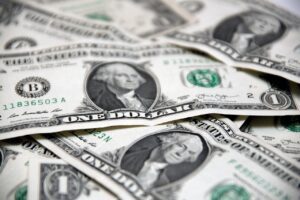
The U.S. dollar is getting stronger against the euro and the pound sterling after declining in the previous session, but it keeps getting cheaper in pair with the yen.
The ICE index showing the dollar’s movement against six currencies (euro, Swiss franc, yen, Canadian dollar, pound and Swedish krone) is gaining 0.16%, while the broader WSJ Dollar Index is 0.12%.
The ICE dollar index fell sharply Thursday after the release of U.S. inflation data, near its lowest level in seven months.
U.S. consumer prices (CPI) rose 6.5% in December compared to the same month last year, the nation’s Labor Department said Thursday. Thus, inflation slowed from 7.1% in November to its lowest level since October 2021. Consumer prices fell 0.1% from the previous month, the first month-over-month decline since 2020.
Traders believe the Federal Reserve (Fed) may slow the pace of prime rate hikes to 25 basis points at its next meeting due to slowing inflation, Trading Economics noted.
The euro/dollar pair is trading at $1.0840 as of 8:00 a.m., up from $1.0854 at the close of the previous session. The pound/dollar exchange rate dipped to $1.2182 during trading on Friday from $1.2212 the day before.
On Thursday, the dollar depreciated by 0.9% against the euro and by 0.5% against the pound.
The value of the American currency in pair with the yen continued to decline on Friday after a 2% decline the day before.
The exchange rate of the dollar fell to 129.19 yen during the trading session, compared to 129.3 yen at the close of the previous one.
JPY was supported by the report of the Japanese newspaper Yomiuri Shimbun that the leaders of the Bank of Japan plan to discuss the unintended consequences of their approach to the monetary-credit policy at the meeting that will be held on January 17-18.
According to the newspaper, the Japanese Central Bank will consider adjustments to monetary policy, including by changing the conditions of the bond purchase program to “reduce its negative impact.
Experts interrogated by Bloomberg expect that the Japanese Central Bank will pass to toughening of monetary policy earlier than it was supposed before.
Almost all respondents of the agency forecast that the Bank of Japan won’t change the main parameters of its policy next week. At the same time 38% of respondents expect its adjustment either in April or in June.